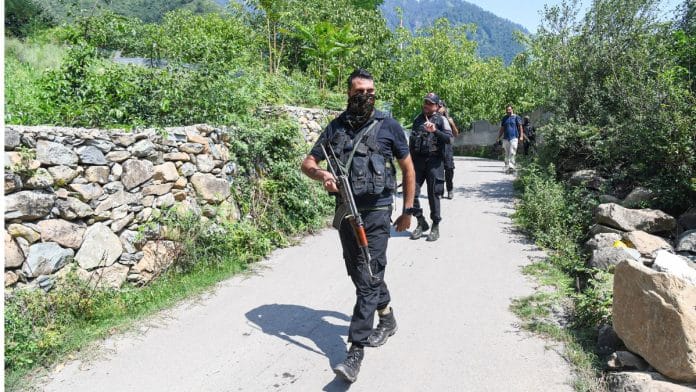New Delhi: The killing of the three LeT terrorists behind the Pahalgam massacre was the culmination of an operation that started immediately after the attack. Finally, it was on 22 May that the Intelligence Bureau (IB)—which was among the several agencies tracking the movement of the Pahalgam terrorists—got a credible input about their presence in the general area of the Dachigam forest near Srinagar in Jammu and Kashmir.
Immediately after the attack, the Army had put in place a wide net to ensure the terrorists did not escape into Pakistan. So, according to security sources, the only option left to the terrorists was to move deeper into the Valley. And Dachigam forest, with its heavy foliage and difficult terrain, was the perfect hiding spot.
Security forces cordoned off the entire area and started sweeping the forest inch by inch, closing in from multiple directions. Meanwhile, the intelligence agencies worked on every possible source.
On 22 May, the IB analysed what they had and decided that the human intelligence they had received was credible enough for them to focus on a particular area.
Sources say that the information was shared with the Centre and a multi-agency coordinated operation was launched—Operation Mahadev. Sources say the operation was named after a hilltop in the area, Mahadev.
“Three terrorists were killed in a joint operation of the Indian Army, CRPF and Jammu and Kashmir Police (on 28 July). One of the terrorists, Suleiman, was a Grade A category commander of LeT (Lashkar-e-Taiba), and our agencies have ample evidence of his involvement in the Pahalgam and Gagangir terrorist attacks. Both Afghan and Jibran were Grade A category terrorists,” Home Minister Amit Shah told the Lok Sabha on Tuesday. “All three terrorists behind the Pahalgam terror attack have now been killed,” he added.
Giving details of the operation, Shah said that from May 22 to July 22, continuous efforts were made to verify the human intelligence generated by the IB.
He said that officers from the IB, Army, Jammu and Kashmir Police and the CRPF kept patrolling in the cold at high altitudes to pick up the communication signals of the terrorists. The tactical part of the operation was being led by 4 Para, an elite unit of the Indian Army.
As reported by ThePrint earlier, the terrorists were using a specialised communication system that was difficult to track. However, specialised interception systems were used by the forces and eventually they managed to track down the group of terrorists while they were communicating—a major success.
On 22 July, the joint team was able to pinpoint the location of the terrorists to a much smaller area. Based on this, security forces threw a multi-tier security ring to ensure that the terrorists could not escape. Finally, a crack team of the 4 Para managed to get to the terrorists and the Indian Army announced their killing in Operation Mahadev on 28 July.
“We received a successful confirmation from sensors on 22 July. Then, a joint team of CRPF, Jammu and Kashmir Police, led by jawans from 4 Para of the Indian Army, encircled the terrorists. The five human (intelligence) assets were also sent for operation, and the three terrorists were killed in the operation,” Shah told Lok Sabha.
He said that further identification of the terrorists was done once the bodies were taken to Srinagar. “NIA earlier arrested those who sheltered these terrorists. When their bodies were brought to Srinagar, we got them to identify the bodies.” Shah said.
Shah added that the forces also matched the bullet casings from the Pahalgam massacre site to the weapons found on the terrorists to establish that the same weapons were used.
“After these terrorists were killed, their rifles were seized. One was an M9, the other two were AK-47s. We got these rifles flown to Chandigarh central FSL (forensic science laboratory) on a special plane,” Shah said, adding that these rifles were then fired to get empty bullet shells. “These were then matched with those found in Pahalgam by the FSL personnel who worked through the night. It was then confirmed that these three rifles were used to murder our innocent civilians,” Shah said.
“I have the ballistic report, which has been cross-checked by six experts who confirmed on a video call at 4.46 am today that the rifles recovered from the terrorists are the same used in Pahalgam,” Shah added.
(Edited by Viny Mishra)
Also read: Pahalgam attack deserves retaliation. India can borrow from US, Israel playbook






